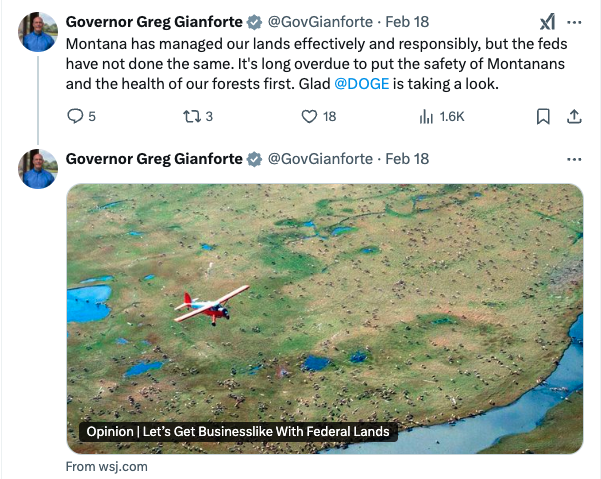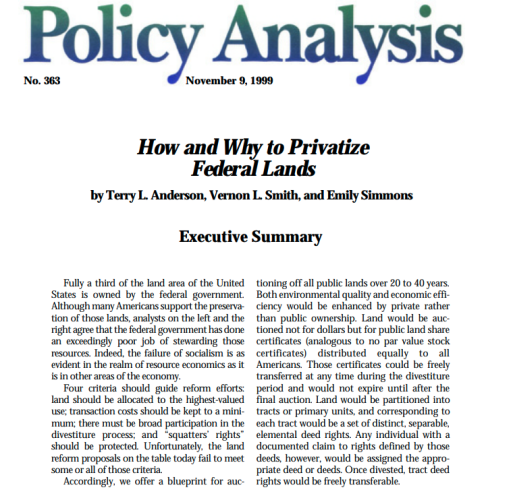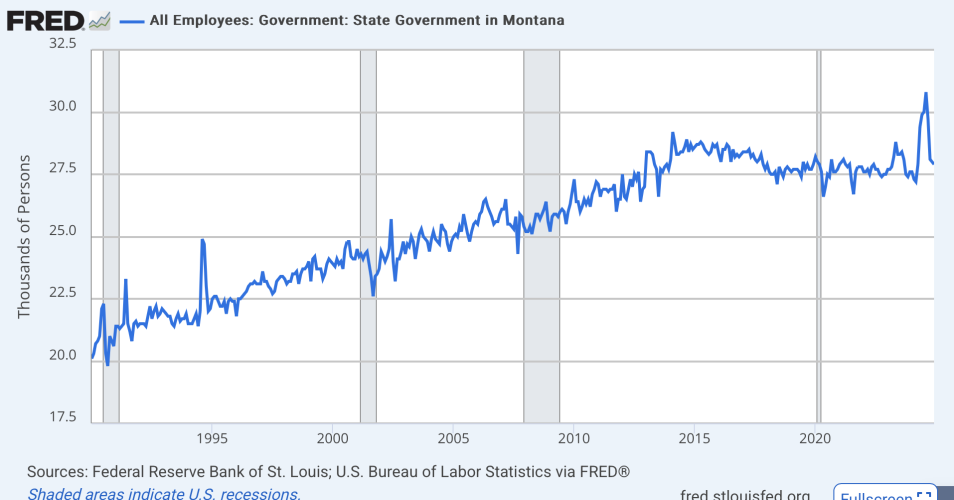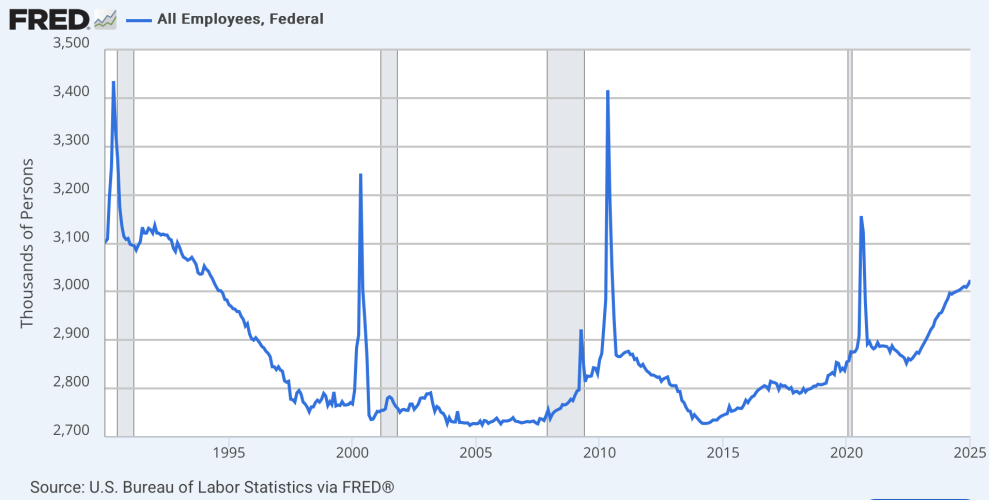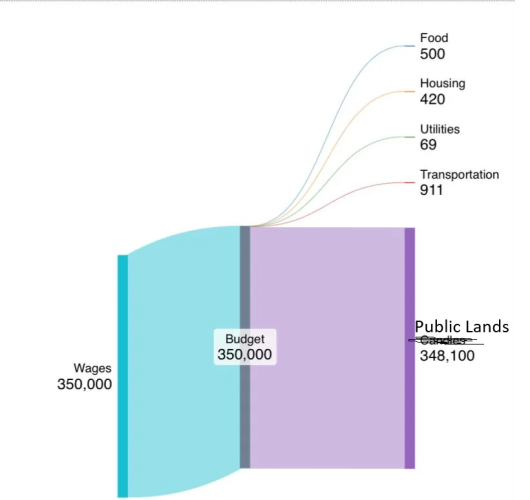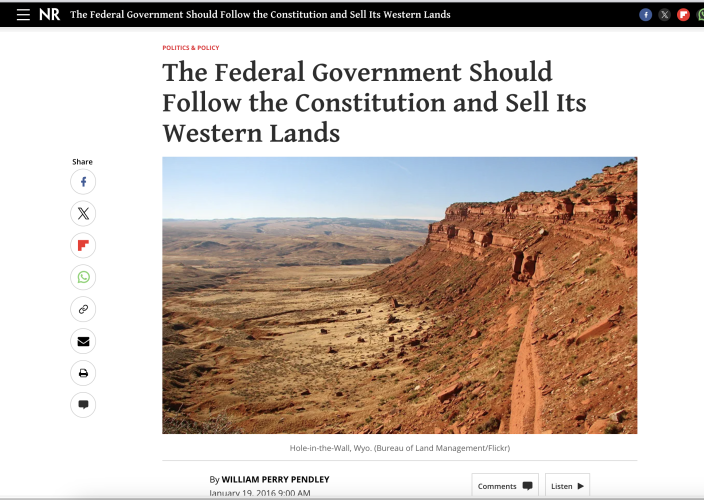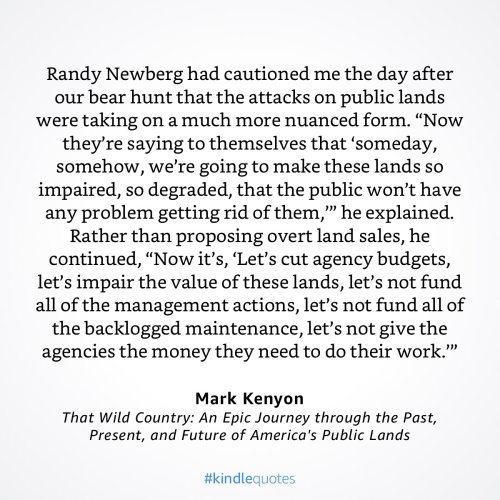At the risk of WSJ getting me for C infringement, I'm copying and pasting.
I should point out that Mr. Anderson is also the past president of PERC.
February 14, 2025
President Trump meant business when he created the Department of Government Efficiency, and Elon Musk is taking care of business by cutting the cost of government. Now Mr. Musk needs to manage the nation’s assets better, especially federal lands.
Federal agencies manage 640 million acres, 28% of U.S. land. The three largest federal land agencies—the U.S. Forest Service, the Bureau of Land Management and the National Park Service—together manage a swath of terrain almost the size of Argentina.
If Messrs. Musk and Trump owned the federal lands, they would have three options: raise the price of goods and services (timber, minerals, visits to national parks), reduce labor costs and liquidate money losers.
Mr. Musk should begin by asking the federal land agencies to submit profit-and-loss statements, as any business does. It took days for me to unearth this information from the government. I estimate that for 2023 (2024 data aren’t available yet) the Bureau of Land Management lost $734.6 million, the Forest Service lost $9.77 billion, and the National Park Service lost $2.82 billion.
In 2015 the Department of Commerce estimated that all federal lands were worth $1.8 trillion. Applying a simple long-term government bond yield of about 5%, a $1.8 trillion asset should yield $90 billion a year, not lose more than $13 billion.
Here are four Economics 101 recommendations to turn the red ink black.
Mr. Anderson is a fellow at Stanford University’s Hoover Institution.
I should point out that Mr. Anderson is also the past president of PERC.
WSJ Opinion
Let’s Get Businesslike With Federal Lands
How Elon Musk and DOGE can improve the environment and reduce the national debt.
By Terry L. AndersonFebruary 14, 2025
President Trump meant business when he created the Department of Government Efficiency, and Elon Musk is taking care of business by cutting the cost of government. Now Mr. Musk needs to manage the nation’s assets better, especially federal lands.
Federal agencies manage 640 million acres, 28% of U.S. land. The three largest federal land agencies—the U.S. Forest Service, the Bureau of Land Management and the National Park Service—together manage a swath of terrain almost the size of Argentina.
If Messrs. Musk and Trump owned the federal lands, they would have three options: raise the price of goods and services (timber, minerals, visits to national parks), reduce labor costs and liquidate money losers.
Mr. Musk should begin by asking the federal land agencies to submit profit-and-loss statements, as any business does. It took days for me to unearth this information from the government. I estimate that for 2023 (2024 data aren’t available yet) the Bureau of Land Management lost $734.6 million, the Forest Service lost $9.77 billion, and the National Park Service lost $2.82 billion.
In 2015 the Department of Commerce estimated that all federal lands were worth $1.8 trillion. Applying a simple long-term government bond yield of about 5%, a $1.8 trillion asset should yield $90 billion a year, not lose more than $13 billion.
Here are four Economics 101 recommendations to turn the red ink black.
- Raise revenue. Suppose that entry fees to Yellowstone National Park increased from $35 a car to $50. In 2024 Yellowstone had 4.7 million visitors. Assuming three people per car, charging an extra $15 would bring in an additional $23.5 million a year. As the late Senate leader Everett Dirksen is said to have observed, “A billion here, a billion there, and pretty soon you’re talking real money.”
- Take Mr. Musk’s sharp knife to land management agencies. Among the more than 60,000 employees in the U.S. Forest Service, the Bureau of Land Management and the National Park Service, there must be redundancies. A 2015 analysis by the Property and Environment Research Center, of Bozeman, Mont., found that state trust land in Arizona, Idaho, Montana and New Mexico generated an average of $14.51 per dollar spent, compared with 73 cents for every dollar spent on federal land managed by the Forest Service and the BLM. Find those efficiency gains.
- Turn ownership of some federal lands over to the states. Federal lands cover nearly 50% of Western states such as Alaska, Nevada and California. The states also own large amounts of land—in Montana it’s 26% of the state, in Arizona 12% and Utah 7%—which generate significant revenue. Montana Gov. Greg Gianforte said in 2024 that thanks to “responsible management of state lands,” $92 million from Montana trust lands revenue would go to public schools.
- Consolidate “landlocked” parcels that create a checkerboard of landownership, making good management and profitability difficult. In 1991, the U.S. Forest Service entered into a land swap with a developer that traded 140,000 acres of company-owned timberland for about 13,400 acres of Forest Service land. The developer then built the Yellowstone Club, a private ski resort in Montana. Before the swap, both parties had many 1-square-mile parcels that could generate revenue only from clear-cutting. Due to consolidation, the Yellowstone Club is worth billions, with part of the land set aside as wilderness. The U.S. Forest Service has many uses for large blocks of land, including logging, recreation and endangered species protection.
Mr. Anderson is a fellow at Stanford University’s Hoover Institution.




